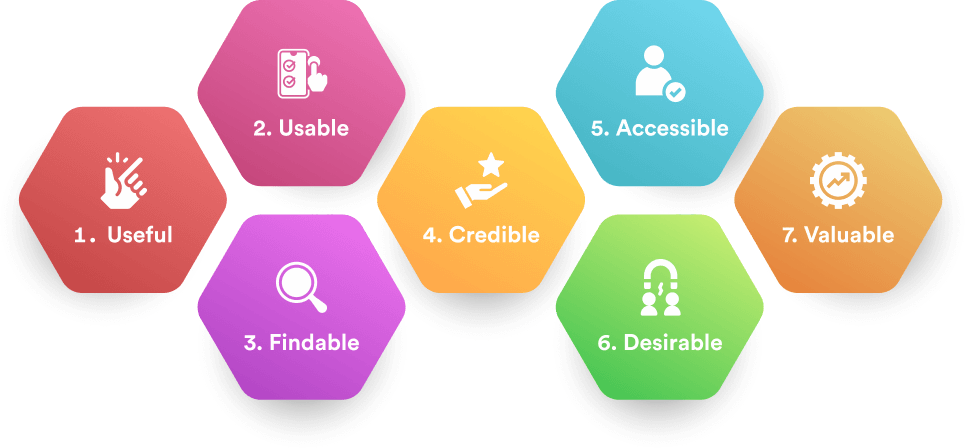Product Design Factors That Companies Must Get Right
February 6, 2023 | Read Time : 3 mins
Table of Contents
Product Design factors that companies must get right
User Experience has become one of the most essential factors to consider when choosing a product or a solution. Everyone has acknowledged the importance of designers and user experience design, whether they work for a small startup or a large corporation. But what specific factors must be taken into account by designers while coming up with these solutions that will meet every user’s needs?
Since 1994, Peter Morville has specialized as an information architect and designer. He expanded his research from information architecture to user experience. As an information architect, he developed a paradigm that exemplifies all crucial user experience elements that designers must take into account.
This concept is called the ‘User Experience Honeycomb.’ The diagram below shows 7 different hexagons and how each affects the user experience.

Each of these 7 factors is beneficial in creating great user experiences. Let’s investigate each element to discover how it affects a design!
Useful
This gives its target customers a reason to come back. A product should only be introduced to the market if it serves a purpose and must be useful to the target market when it is being designed. A product is unlikely to compete for attention if it serves no purpose. To ensure the product’s long-term viability, it must be highly useful to its users.
Richard Koch has listed 5 key ways to boost the utility of your product to make a significant impact on the customer and design your product in a useful manner. which are
- Performance variance
- Enhance the quality
- Add additional features without compromising usability
- Offer a wider range of products
- Provide the ability to Customize
When your product positively impacts the user and is more helpful, the user has an intention to keep the product around. Users will likely enjoy your product even more as you update it and improve its functionality. Additionally, the product’s utility will improve since the consumer will become emotionally attached to it when it is tailored to their habits and behavior.
Usable
Users can accomplish their goals quickly and successfully because of this factor. Products can still succeed if they are not usable, but they are significantly less likely to do so. A high level of usability can increase competitive advantage and provide the user with comfort and a sense of safety.
Findable
Findability ensures that the product and its contents are easy to locate. Whatever products are made, they must be simple to use, allowing the customer to find what they need and complete their goal. To help users find what they need, we must work to design products and solutions that are easy to use.
Credible
The ability to trust a product is referred to as credibility. If the user believes the product designer is dishonest or has ill intentions, providing a positive UX is all but impossible. Always make sure that your product delivers on its promises.
Accessible
Today, the concept of accessibility is one that we hear about a lot. This element focuses on offering an experience that users with a wide range of skills can access.
Desirable
The design uses branding, visual identification, aesthetics, and emotional design to convey desirability. Any product or solution visual components must be aesthetically pleasing, simple, and user-friendly. Users are more inclined to rave about a product and stimulate interest in other users if it is more desired.
The human desire to keep a product and use it for a longer duration is increased by desirability. Therefore, visually attractive components are a key thing to consider for this factor.
Valuable
Last but not least, the core component in the honeycomb is Valuable and can be referred to as the “Sum” of all the other elements. This element ensures that the product you create is valuable to both the company and the customer.
Even the “value” side of your business depends on your users. To give the user the optimal experience, you, as the designer, must strike a balance.
Each product and solution may differ depending on the user’s preferences and content, but by adhering to the UX Honeycomb principle, you can be confident that every user will find satisfaction in the product or solution you develop. This idea addresses crucial areas on which we as designers need to focus.






